South Africa Locks Onto Coal Despite Water Risks, Grim Market Trends
Demand and prices steadily slip, causing economic and political turbulence.
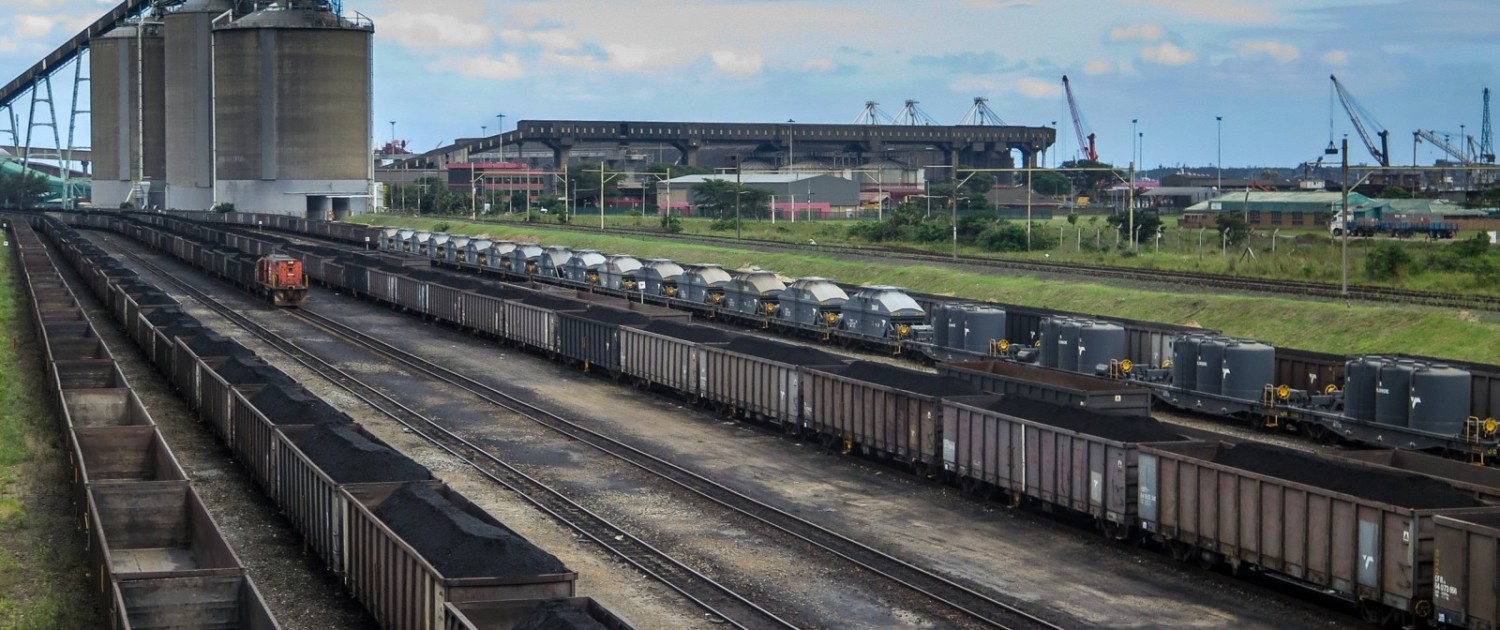
The coal terminal at Richards Bay, an Indian Ocean port in KwaZulu-Natal province, is where South Africa ships most of the 70 million metric tons of coal it exports annually. Photo © Keith Schneider / Circle of Blue
By Keith Schneider
Circle of Blue
VRYHEID, South Africa — The chilly highland valleys of northern KwaZulu-Natal province, where coal mining and agriculture have coexisted since the late 19th century, have never been a geography of unfolding uncertainty, mystery, and menace like they are today.
South Africa’s allegiance to coal mining and coal-fired power generation in an era of rising concern about water supply and quality, and weakening national and global demand is causing a furor in the country’s mining sector, affecting the financial community, and tearing holes in President Jacob Zuma’s veil of privilege and scandal.
The national turmoil and a number of distinct regional conditions are tilting the balance of benefits and risks against new coal development in this area, say many residents. A deep two-year drought, the worst ever experienced in northern KwaZulu-Natal, emptied the drinking water reservoirs of Vryheid and nearby Paulpietersburg late last year. Thousands of town residents line up every morning to fill buckets with fresh water transported by tanker trucks from sources as far away as Pongola, a farm town set by the river of the same name that is 132 kilometers (82 miles) east of here.
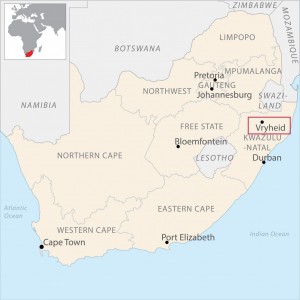
Map © Codi Kozacek / Circle of Blue
Outside the hill towns, where springs and deep wells are still active, one coal company is drawing nearer to gaining a license to mine a new coal seam near Paulpietersburg. At least nine other companies have been quietly nosing around the steep slopes of the area’s tabletop mountains for unmined reserves.
Markets for new reserves are thought to include coal-fired power stations in neighboring Mpumalanga province, and for export. Richards Bay, South Africa’s primary export shipping terminal, is 214 kilometers east (133 miles).
Senior managers of the South Africa Department of Mineral Resources declined to be interviewed for this article. The department’s weak public involvement mechanisms and Web site make it difficult for citizens to follow new licensing applications. Farmers, acutely anxious that pollution from new coal mines could contaminate their water, have responded by establishing a new advocacy group, the Pongola River Catchment Protection Association, to keep abreast of mining activity on the ground, and to oppose new mineral development.
On an overcast day earlier this year Mattie Beukes, a retired sugar cane grower, and Johann Boonzaaier, who manages the big water supply and transport network for Pongola’s sugar cane plantations, toured the quiet highland valleys to talk with farmers and civic officials. Their goal was to gain intelligence about any new coal mining activity. The fact-finding trip turned up no fresh evidence of new mines, but the region around Utrecht and Vryheid is alive with mining proposals not yet acted on.
“What we think about is how mining affects our water supply,” said Boonzaaier, the chief executive of the Impala Water Users Association, which supplies water to 17,000 hectares (42,000 acres) of sugar cane plantations in a dry valley closer to the Indian Ocean. “Any mine pollution from here, on the highlands, could flow to our water downstream.”
Coal mining also mixes with another threat in this region. Like a cold fog, the sense of regional apprehension settling over the KwaZulu-Natal highlands grew more gloomy two years ago when Nico and Marcia Lens were murdered at their grain and cattle farm tucked into a highland slope outside Paulpietersburg. The unsolved murders of the 62-year-old farmer and his 52-year-old wife draw agriculture and energy together in an unexpected way. The Lens’ empty and unsold white farmhouse, which lingers barely visible beneath untrimmed trees at the end of a long dirt drive, lies close to the 2,000-hectare (4,942-acre) underground coal mine that Tholie Logistics, a small Johannesburg mineral company, proposes to develop.
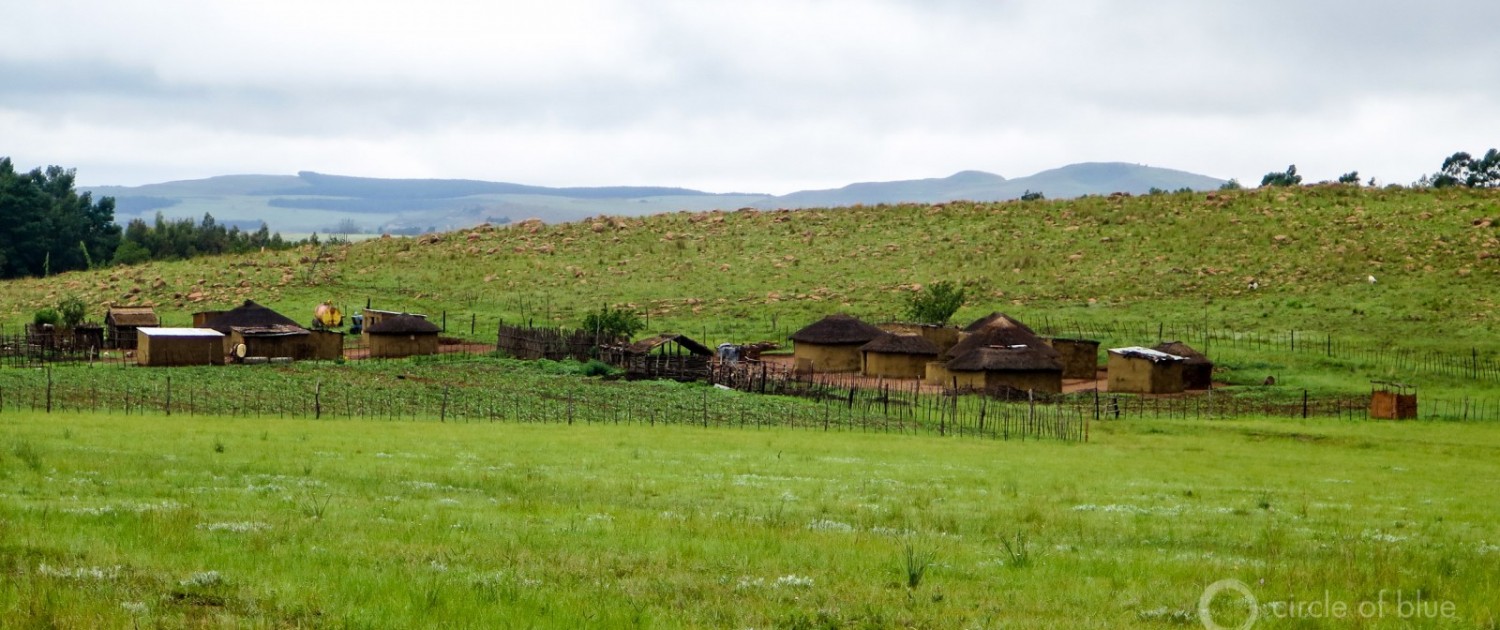
A Zulu family compound in the hills near Vryheid where a big underground coal mine is proposed. Photo © Keith Schneider / Circle of Blue
The murders and mining applications have put farmers and other residents of this region on high alert for their personal security, and the safety of the land.
“No one knows why it happened. They were good people,” said Beukes, who started a new career last year as a land and water conservationist. “People are a little nervous. Things are happening here that make you worry. New coal mining in this area. It’s not a good use for the land.”
That sentiment is gaining more credibility in KwaZulu-Natal and across contemporary South Africa. Though there are a small group of out-of-work miners, some government officials, and a handful of mining executives that view new coal production in KwaZulu-Natal as a boost to job growth and local treasuries, it is by no means a consensus opinion. In interviews with farmers and local residents, white and black, people objected to new mining.
Almost all of the existing coal mines in KwaZulu-Natal closed in the 1990s. Left behind are black heaps of mine wastes and big areas of disturbed hillside that look like infected and gaping wounds. Acidic red water, caused by minerals that leak from abandoned mine sites, pollutes the region’s streams.
“I lived near the mine at Longridge for 40 years. It’s 15 kilometers from here. Not far,” said Gerrie Beukes, a farmer that has joined the opposition to new mining. “For 30 years of the time, I did battle with the mine. It’s been rehabilitated, but it won’t ever be what it was in the past.
“The water is sour. If you use it in the garden, you pick up the hose and it’s a bundle of nothing. It dissolves the iron. I’ll fight any new mine with everything I have. It’s just a mess.”
WWF-South Africa Takes a Close Look
The local opposition is supported by the work of public interest organizations, particularly the South Africa office of the World Wide Fund For Nature. WWF-South Africa’s research about the effects of coal mining on water quality, including a seminal 2011 report, found that new coal mining in KwaZulu-Natal’s highlands would likely form a paramount disturbance to one of South Africa’s most important sources of fresh water — the mountainous Enkangala drainage.
The headwaters of the Pongola, Thukela, Bivane, and Vaal rivers, which flow to eastern and central South Africa, start in the 160,000 square-kilometer (62,000 square-mile) highland drainage. More than one million residents depend on the Enkangala for water. Prosperous farm sectors, which employ thousands of South Africans, particularly the sugar cane plantations of eastern KwaZulu-Natal, are served by water from the drainage. Even in the moisture-scarce conditions of South Africa’s two-year drought the headwaters of the Enkangala continue to receive sufficient rainfall to produce ample upstream flows.
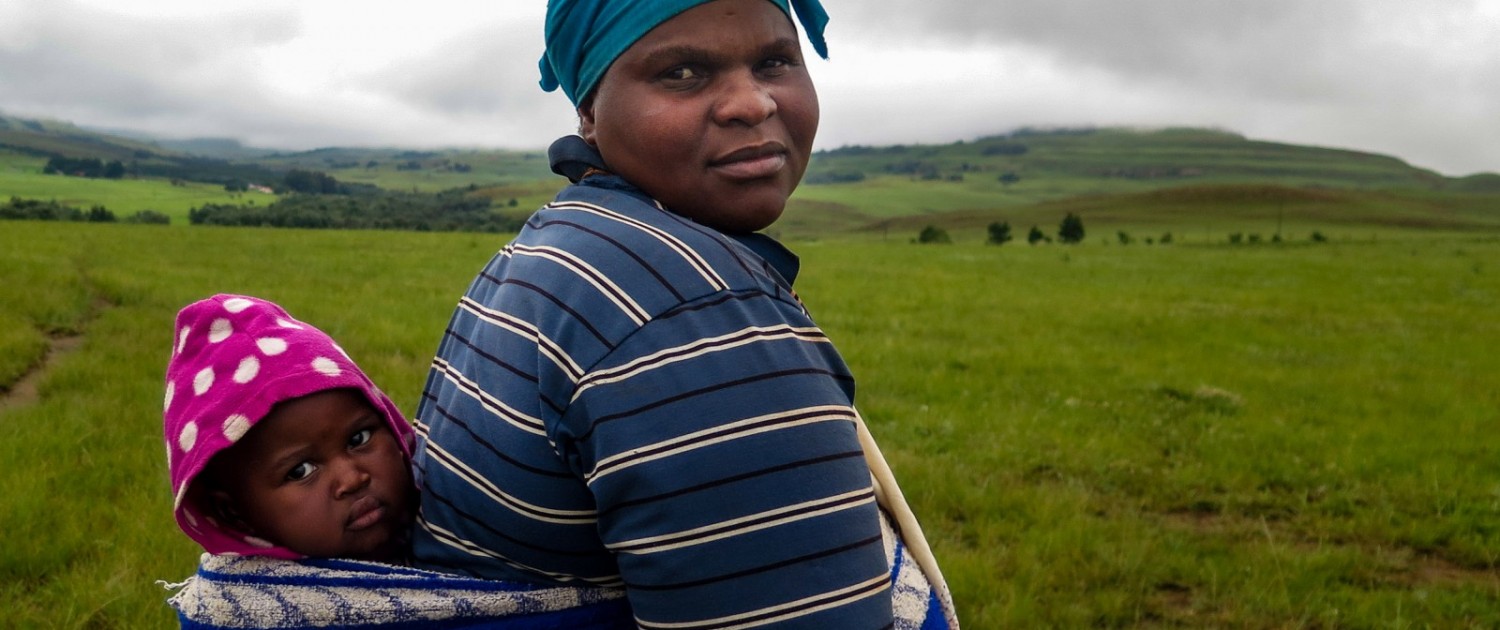
Zulu villagers in the Vryheid region are nervous about new coal mine proposals. Juliette Ndosi and her son, Tobi, live in a family compound near a proposed mine. The project might mean job opportunities, she said. It could also force her family to move. Photo © Keith Schneider / Circle of Blue
“It is a terrible idea to encourage mining in that region,” said Christine Colvin, senior manager of Freshwater Programs for WWF-South Africa, who is based in Cape Town. “The drought is reminding us of how important it is to keep the water flowing from there as clean and abundantly as possible. The whole country depends on it.”
Last year Colvin worked with Johann Boonzaaier and Mattie Beukes to establish a frontline land and water conservation advocacy project to safeguard northern KwaZulu-Natal watersheds from coal mining. The campaign is a study in vigilance and uncertainty.
Since 2009 mining companies have applied to the South Africa Department of Mineral Resources for licenses to prospect for coal in at least 13 sites scattered around Vryheid, Utrecht, and near Paulpietersburg. A number were approved, but just one company, Tholie Logistics, has advanced its application to the next stage of licensing, according to public records.
The documents explain that the company’s underground mine near the Lens farm would produce 480,000 metric tons of coal annually from a narrow seam about 72 meters (236 feet) below the surface and employ 200 people. The underground mine also would be among the largest industrial users of water in northern KwaZulu-Natal, consuming 12,500 cubic meters (3.3 million gallons) of water a month.
The Impala Water Users Association and other members of the Pongola River Catchment Protection Association filed an appeal to the license application, citing the mine’s proximity to water supplies and the threat of severe mine pollution.
“You have to wonder why our government would even consider approving this mining license,” said Boonzaaier.
Good question. To a large extent South Africa’s persistent interest in mining more coal is not a reflection of future demand, which peaked globally in 2015. Rather it represents an allegiance to an industrial fuel that, while long commanding the nation’s energy supply, is now producing a trail of environmental waste, economic disruption, and political instability.
Yet South Africa’s senior government leaders, and many of its biggest lending institutions, are diligent in their support of coal as a fuel source. One reason is that the nation’s more than 50 billion-metric ton proven reserve of coal is among the largest of any nation. Another is that South Africa has over 80 years of experience in mining and coal combustion technology and practices. Seventeen big coal-fired power plants produce most of South Africa’s electricity.
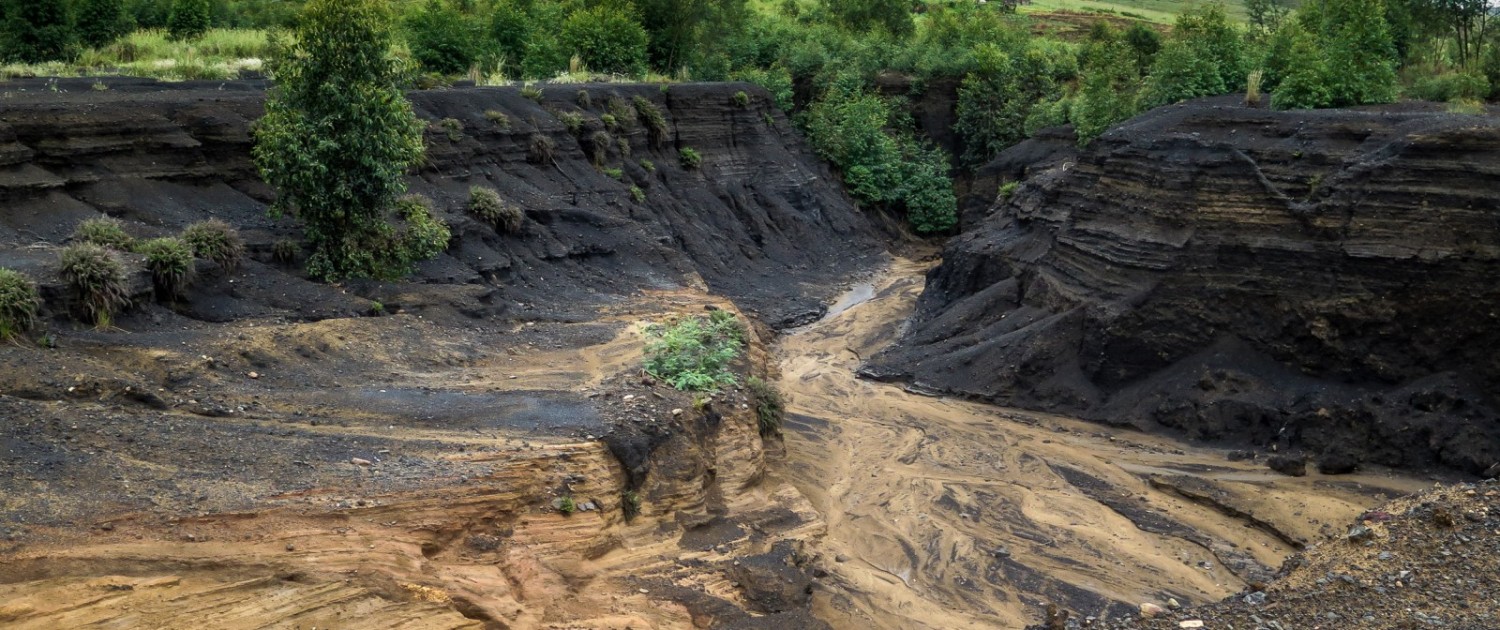
An abandoned mine outside Paulpietersburg, like an open sore, drains toxic minerals and acidic water into nearby streams. Photo © Keith Schneider / Circle of Blue
A third answer is that top government leaders are financially tied to the coal industry. President Jacob Zuma’s son, Duduzane Zuma, is a principal in Tegata Exploration and Resources, which last year purchased the Optimum coal mine. The big mine produces 10 million metric tons of coal a year for power generation and exports. The financially struggling mine was sold by Glencore, the largest mining company in the world.
Another coal industry ally close to President Zuma is his African National Congress, the ruling party since the 1994 multi-racial elections that formally ended Apartheid. The ANC operates an investment arm, called Chancellor House, that owned an investment stake in Hitachi, which won the multi-billion dollar contracts to build the boilers for the two giant and unfinished Medupi and Kusile coal-fired power plants. Chancellor House also has a financial stake in the proposed 1,050-megawatt coal-fired Colenso power plant, proposed along the Thukela River south of here, which is seeking operating permits and also has financial backers from China.
These and other factors mean that South Africa appears determined to lock itself into a national energy strategy that calls for more coal. The South Africa Department of Energy insists that the nation needs to generate 81,000 megawatts of electricity by mid-century to serve growing cities and industries. That is nearly twice as much generating capacity as exists currently. Most of that new generation, the department says, will come from coal. South Africa told the nations of the world during the UN Climate Summit in December 2015 that demand for coal will grow by millions of metric tons a year until it levels off around 2030.
Markets and the Earth Push Back
But a convergence of real world trends and events points to a much different, and more likely, energy development path for South Africa, and a more dire outlook for coal in South Africa.
The nation’s coal exports, typically about 70 million metric tons a year, are in jeopardy as the country’s primary Asian markets demand less. Coal mining jobs are being phased out of mines operating at less than full production. Acid mine drainage from abandoned coal mines continues apace and is activating communities all over the country to demand enforcement of national water quality laws.
The financial outlook for coal is terrible, and big coal companies and investors are abandoning the industry. Prices have fallen to below $US 43 per metric ton, half the price six years ago. BHP Bilton, the world’s second largest mining company, is selling all of its South African coal mines. Anglo American, for decades South Africa’s largest company, announced in February it is selling its seven big South African coal mines and interests in several affiliated mines. Last year those mines produced 50 million metric tons of coal, according to the company, or a bit less than 20 percent of all the coal mined last year in the country.
Fossil Free, a project of the climate advocacy group 350.org, counts over 500 investors and institutions, with combined assets of $US 3.4 trillion, that have committed to divesting from fossil fuel-related companies and projects. JPMorgan Chase this month joined promises from Bank of America, Citigroup, Morgan Stanley, and Wells Fargo to withdraw from investing in new coal mines and financing most new coal-fired power plants.
There’s more. South Africa’s 17 big coal-fired power plants, 14 managed by Eskom, the big national utility, are among the largest producers of climate-changing emissions on Earth, and produce the carbon pollution that is destabilizing the nation’s hydrological cycles. Two giant and unfinished coal-fired plants, Medupi and Kusile, are a decade overdue, at least $US 20 billion over budget, and may not have enough water to operate if and when they do open in full, now projected to be in the early 2020s.
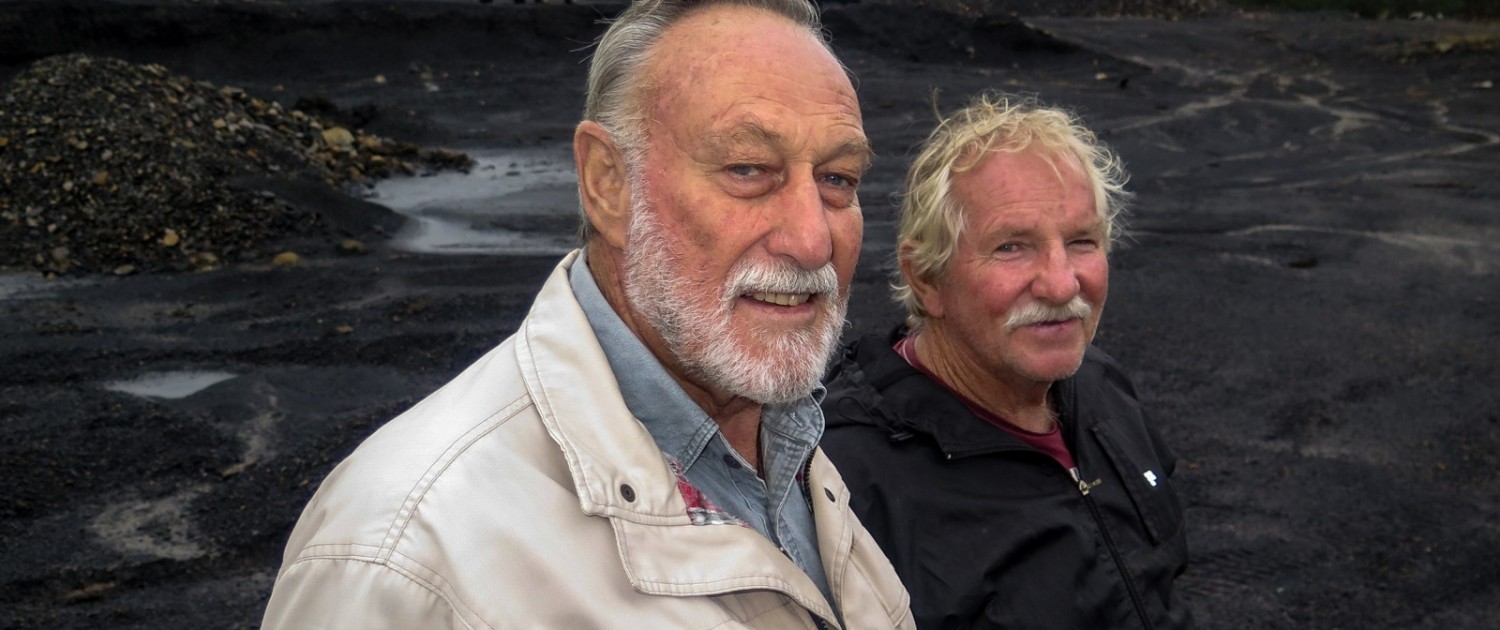
At the site of an abandoned coal mine near Vryheid, Gerrie Beukes (left) and Hugo Joubert (right) explain the damage to land and water that occur at unreclaimed mines. “I’ll fight any new mine with everything I have. It’s just a mess,” Beukes said. Photo © Keith Schneider / Circle of Blue
This month, due in part to the rising cost of Kusile and Medupi, South Africa raised its electricity rates by nearly 10 percent. The price hikes come as demand for electricity slips with the weakening international orders for smelting and processing, two big power consumers. The rising electricity prices also are trimming the eagerness of smelting companies to modernize and expand their South African plants. Some companies are considering leaving the country to seek cheaper electricity.
There was a time, back in the 20th century, when the strategy of a coal-fired national economy made more sense, especially in South Africa where some of the planet’s largest coal reserves are located. The years after the turn of the 21st century, though, produced markedly different ecological and economic conditions that pointed to a new path for the country’s development.
To its credit, South Africa did not ignore what it faced. In 2002, Johannesburg hosted a world summit on sustainable development that featured presentations by South African authorities on clean energy, energy efficiency, water conservation, and how climate change would disrupt the country.
In 2008, the country adopted a national framework for sustainable development and approved a sustainable development plan in 2011.
Renewable Sector Develops
Out of this work came South Africa’s successful renewable energy sector, which produced 1,900 megawatts of new generating capacity from 2010 to 2015 at costs below generating new capacity from coal.
In 2014, with the help of Stellenbosch University in Cape Town, the national government published a National Strategy for Sustainable Development. The paper recommended, among other things, that South Africa devote two percent of its GDP, about $US 8 billion annually, to green economic development.
The paper took direct aim at the developing and exobitantly expensive folly around the construction of the Kusile and Medupi power plants, now projected to cost over $US 32 billion. More energy efficiency, more conservation, better practices in agriculture, industry and tansportation, said the authors of the report, would save money, generate new industries, produce new job sectors, and “reduce energy demand comparable to the capacity of the coal-power stations under construction in South Africa.”
Such guidance, though, has not penetrated very deeply into the Zuma administration. The government has called for international investors to help South Africa build 2,500 more megawatts of coal-fired generating capacity.
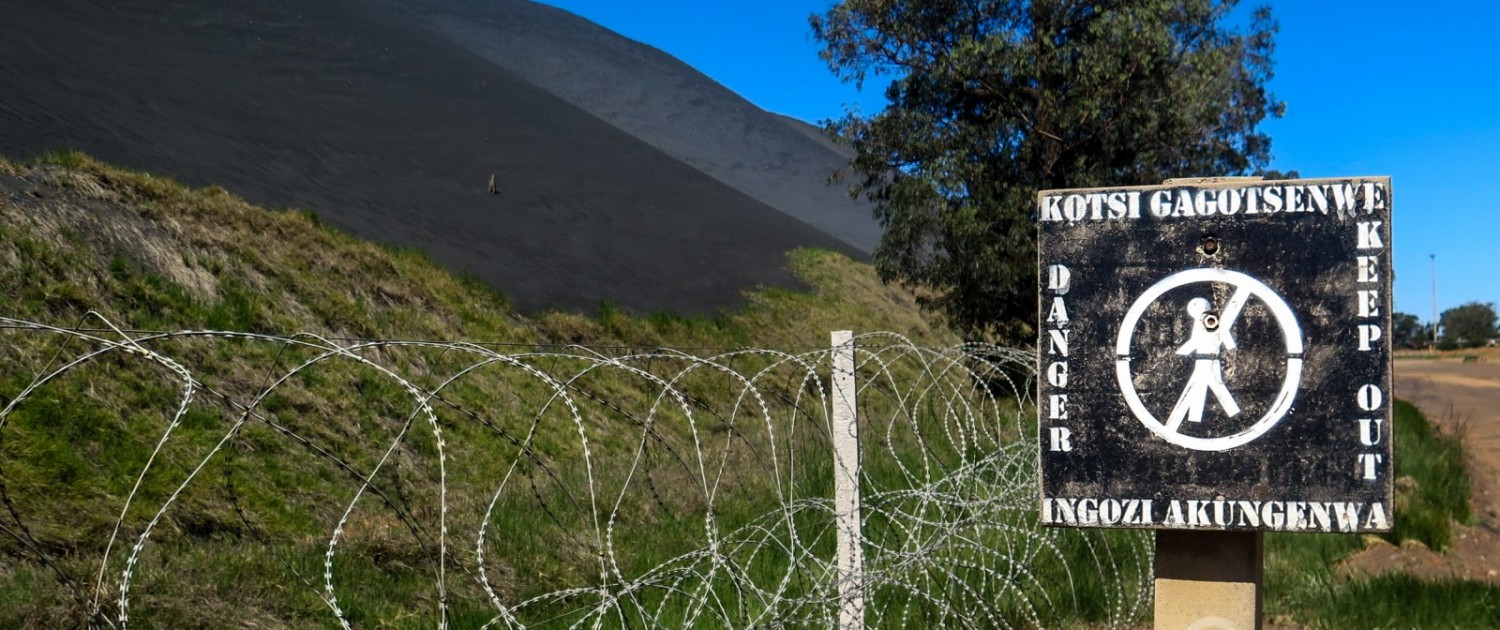
Outside Emalahleni, the center of South Africa coal mining and coal-fired electricity generation, a sign warns of the hazards from interacting with a coal waste pile. Photo © Keith Schneider / Circle of Blue
“For me, it is all embarrassing, mind boggling and also, to an extent, frightening,” said Johann Boonzaaier of the Impala Water Users Association. “It’s like a preface to a dire political-financial-downslide nexus that is playing off in South Africa. What is happening is a mad dash to the last frontier of a market that is becoming more in disarray.”
Three new proposals for coal-fired stations financed by international construction companies have been put forward in Limpopo, Mpumalanga, and KwaZulu-Natal. All have come under pressure from Earthlife Africa, groundWork, the Center for Environmental Rights, and several more regional public interest organizations, which filed a formal appeal this month for the government to review and reject permit approvals from the Department of Environmental Affairs.
The second largest of the proposed projects, the 1,050-megawatt Colenso plant, is under consideration to be built 170 kilometers (105 miles) south of Vryheid and near the Thukela River. The plan is to supply most of the plant’s three million metric tons of annual coal demand from its own neighboring mine. The company’s executives argue the $US 1.3 billion plant, which would generate hundreds of construction jobs, will not pose a threat to the river.
Bobby Peek, the director of groundWork, which is based in Pietermaritzburg, near Durban, contends that there is no record of coal production and combustion in South Africa that supports the company’s view.
“I’m so frustrated,” Peek said in an interview.”They want to build this plant at the headwaters of the Thukela River, the headwaters of one of the most important rivers in KwaZulu-Natal. KwaZulu-Natal is in the midst of its worst drought in at least the last 40 years. What do you do? You develop a new coal mine and a new coal-fired power station that will extract more of our water. It makes no sense.”
Circle of Blue’s senior editor and chief correspondent based in Traverse City, Michigan. He has reported on the contest for energy, food, and water in the era of climate change from six continents. Contact
Keith Schneider

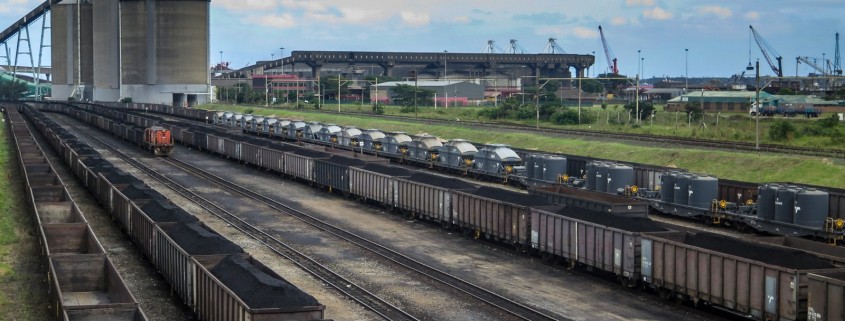

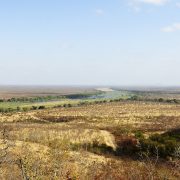
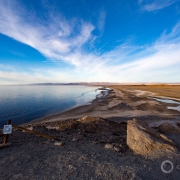
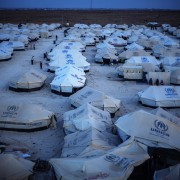
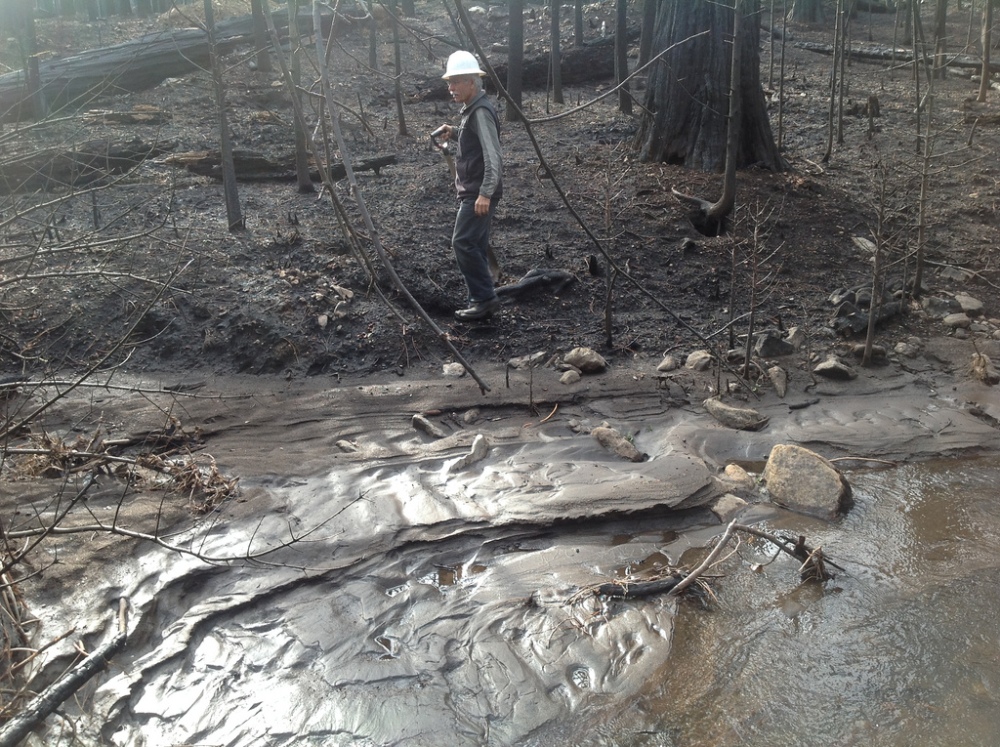
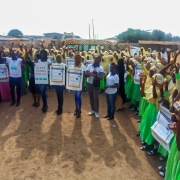
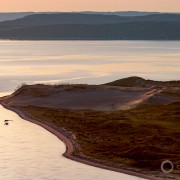


Leave a Reply
Want to join the discussion?Feel free to contribute!